Showing 221–230 of 322 results
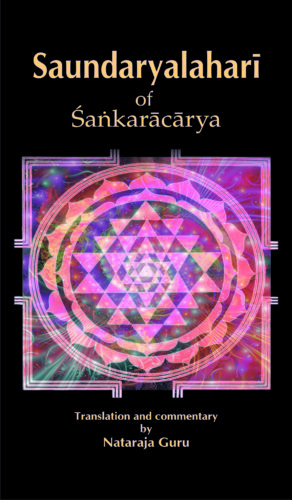
This detailed commentary views the Saundaryalahari compilation of 100 verses in praise of the Devi as Advaita Vedanta itself. The absolute joy of Advaita is presented in a pictorial language, subjectively as ananda, and objectively as saundarya.
The Saundaryalahari has fascinated and puzzled generations of scholars and laypersons; subject to continuing study and debate, till today, such details as the authorship of the 100 verses named the Saundaryalahari remain a matter of contention, particularly among scholars. While some attribute it to Shankara, others argue that the Saundaryalahari’s verses in praise of the Devi cannot have been authored by this staunch Vedantin; some argue that its value is essentially in the realm of what is loosely called “tantra,” while others extend the significance of the Saundaryalahari to include the preoccupations of Vedanta. Nataraja Guru is unequivocal in his belief that none other than Shankara could have composed this masterpiece of mystical poetry and identifies internal evidence in the verses themselves to support this view. The detailed commentary views the Saundaryalahari as Advaita Vedanta itself. The absolute Joy of Advaita is presented in a pictorial language, subjectively as ananda, and objectively as saundarya.
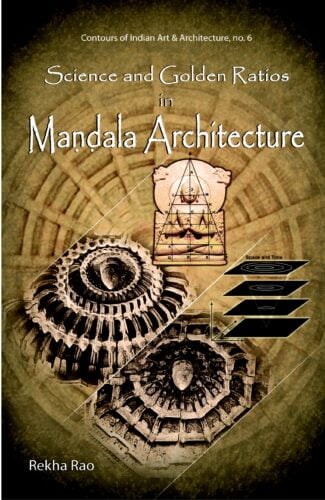
The book throws light on the structural, philosophical and scientific perspectives of mandala designs of temples, and explores the relationship between spiritual ideas and the ideas of scientific advancement as exhibited in the mandalas of ancient temples.
Indian temples are a rich repository of the religious, cultural, and artistic life of the society. Of special importance here are the circular, intricate, and artistic patterns called the mandalas, which are placed in the bhuvaneshvari of the temple that is conceived as the microcosmic representation of the cosmos in a temple.
The study of the significance of the mandalas are based on the aspects like symbolism, fractals, numerology, and sacred geometry that are used as codes to reveal the mystery of the universe and the eternal laws that govern the order of the universe. The diagrams of mandalas, concealing vast and grandest knowledge of science and spirituality in an amalgamation, are condensed to simplest graphic designs so that the knowledge of science was accessible to the commoners. The study presents the structural, philosophical and scientific perspectives of some mandalas belonging to the early Calukya, late Calukya and the Hoysala temples of south India. The research work also explores the study of the Golden ratios on which the mandalas and the divine images of the temples are designed.
The book will prove extremely absorbing to scholars concerned with the study of the art and architecture of the ancient divine sculptures.

A compilation of seminar papers by Indian and foreign experts brings alive ancient Indian developments in science, technology and medicine. The book presents Vedic quest in science and metaphysics with a special emphasis on ancient science and contemporary ideas.
The volume comprises seminar presentations by experts from India and abroad involved in the study of development of the natural sciences in ancient India. It offers eighteen papers from the seminar that showcase and project the Vedic literature as a treasure trove of vast knowledge that covers various branches of learning. The papers in particular discuss the ancient developments in science and technology: logic, mechanics in Sanskrit literature, Indian mathematics and its application in the Vedas, besides production technology and mechanical engineering, environmental science and roots, applicative wonders and scientific validation of Ayurveda. They involve a deep study of the Vedic understanding and description of sound and speech as para, pashyanti, madhyama and vaikhari. They also deal with the Indian perspective on the spirit and some mahakavyas of Indian philosophy. They scrutinise various theories on matter, causation, metals, dreams and motion, according to the Vaisheshika philosophy and underline the relevance of ancient knowledge to the contemporary world, especially in relation to the Vedic physics, environmental science and Ayurveda. They reiterate in unison the scientific vision of the ancient sages who held the keen eye of a poet-artist even while bringing to light modern and advanced ideas. The papers include references to various commentaries and studies on scientific and mathematical treatises, like Katyayana’s Shulbasutra and Vaimanikashastra of Bharadvaja.
The book will interest Indologists, particularly concerned with the study of ancient science, technology and mathematics, as they evolved in ancient India.
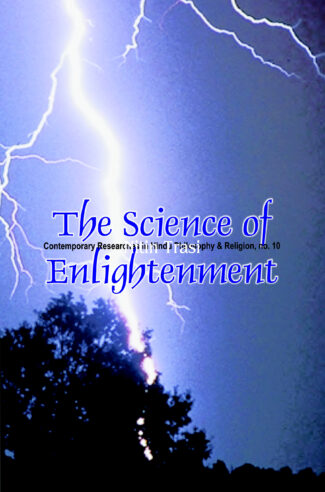
This work demystifies the entire subject of spirituality and the phenomena of Enlightenment and Liberation by demonstrating how they have a scientific basis and are definable in scientific/psychological terms.
What is the precise nature of Reality or God? And what exactly, in scientific terms, is the much-talked about spiritual phenomenon called Enlightenment? Is it at all scientifically possible for a state devoid of ego to exist? And can a person do his normal duties in life in such a state? This book answers these and kindred questions convincingly: in a way that should appeal to a scientist, a spiritualist and a lay person alike. Uncommonly combining in him the rationality of a medical scientist and the profundity of his religio-philosophical studies, the author demonstrates how the spiritual phenomena of Enlightenment and Liberation do have an eminently satisfactory scientific explanation an explanation which he also reconciles with conventional spiritual teachings. Finally, flitting adroitly from Advaita to Tao, Zen to Sufism, Buddhism to Christianity, Dr. Trasi shows how the teachings of different faiths arent different in essence, but just constitute intricate parts of the one and the same grand, big picture. With deep insight, forceful logic and supporting references, Dr. Trasis book not only dispels many of the myths, mis-conceptions and distortions woven around Enlightenment, the Liberated State, the Soul and Death, but explores the rationale behind wide-ranging traditional beliefs as well. Also set out is a scientific explanation of diverse spiritual terms. Nor is the practical aspect neglected here including, as it does, a scientifically-backed guide to offset the oft-recurring doubts and questions that nag the average spiritual enthusiast. Written lucidly, the book is bound to interest scientists, sceptics, and anyone else even remotely concerned with spirituality.
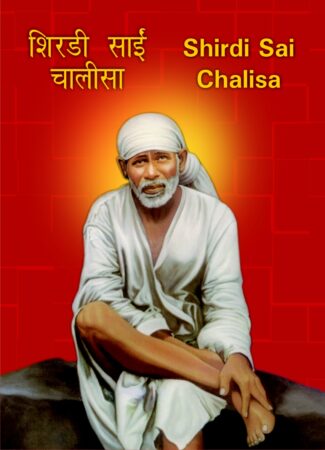
In this book, alongside the 40 verses or chaalisa, are given their meaning in Hindi and their English translation. Sri Sai Baba aarati is also included.
In this book, alongside the 40 verses or chaalisa, are given their meaning in Hindi and their English translation. Sri Sai Baba aarati is also included.

Invoking Lord Hanumana for his blessings for the sake of knowledge, strength and wisdom in general and for the mitigation of difficult situations in particular, is a common practice among devout Hindus. As per belief and practice the solution lies in the recital of Hanuman Chalisa.
The Small, hard-bound hand-book, running into 64 pages, reproduces each and every stanza of the Hanuman Chalisa in original, with easy-to-understand Hindi translation. What is outstanding about the publication are the colourful, full-page visuals (artworks) depicting the super-mundane, mythological episodes related to the Mahabali, Veer Hanumana as the saviour and the ever-dependable Lord of the true devotees.
Invoking Lord Hanumana for his blessings for the sake of knowledge, strength and wisdom in general and for the mitigation of difficult situations in particular, is a common practice among devout Hindus. As per belief and practice the solution lies in the recital of Hanuman Chalisa.
The Small, hard-bound hand-book, running into 64 pages, reproduces each and every stanza of the Hanuman Chalisa in original, with easy-to-understand Hindi translation. What is outstanding about the publication are the colourful, full-page visuals (artworks) depicting the super-mundane, mythological episodes related to the Mahabali, Veer Hanumana as the saviour and the ever-dependable Lord of the true devotees.

For hundreds of years the devout Hindus have been invoking Lord Hanumana for his blessings by reciting Hanuman Chalisa for overcoming difficulties and diverse situations as also for strength, knowledge and wisdom.
This unique hard-bound beutifully illustrated booklet ‘Hanuman Chalisa’ offers readers the original couplets with transcription and translation into easy to understand English and Hindi. An unusual feature of the 112 page booket are the full-page colourful visuals (artworks) on almost every alternate page depicting various famous episodes of the evil-fighting, devotee-loving Lord Hanumana.
For hundreds of years the devout Hindus have been invoking Lord Hanumana for his blessings by reciting Hanuman Chalisa for overcoming difficulties and diverse situations as also for strength, knowledge and wisdom.
This unique hard-bound beutifully illustrated booklet ‘Hanuman Chalisa’ offers readers the original couplets with transcription and translation into easy to understand English and Hindi. An unusual feature of the 112 page booket are the full-page colourful visuals (artworks) on almost every alternate page depicting various famous episodes of the evil-fighting, devotee-loving Lord Hanumana.

The volume aims at sharpening the skills of translating the Sanskrit philosophical texts so as to retain fundamental concreteness, basic dynamics and original flavour. The volume particularly highlights the use and significance of prefixes in the backdrop of leading Indian philosophical texts.
This volume attempts to present a dynamic approach to translating Sanskrit philosophical texts while emphasizing on keeping certain principles in mind when rendering Sanskrit philosophical texts such as: the fundamental concreteness, the basic dynamics, the resultant ambiguity and the necessary congruence of the term in question with the specific context in which it is introduced. In this context, it particularly throws light on the use and significance of prefixes, particularly of propositions used as prefixes, in Sanskrit philosophical terminology. It also examines the basic problem in dealing with prefixes; their relation to the verbal roots to which they are attached. It studies the philosophical texts of various leading schools and systems including Vedanta, Mimamsa, Samkhya, Yoga, Nyaya, Vaisesika, Buddhism and Jainism, to examine the compound-terms in them and the mental operations which are grammatically and philosophically expressed. Study of the variation of terms brought about by the application of prefixes is intended. It argues that the prefixes throw into relief, by the different modes of their application, the specific bent of the systems themselves. They have retained the motional and emotional significance, which they apparently once had, at the earliest stage. The book also takes up some vital questions, such as, whether the prefix or the noun is the essential bearer of the meaning.
The volume is a well-researched study of the use of language in Sanskrit philosophical texts. It will prove useful to scholars and students of Indology, particularly those concerned with Sanskrit language and philosophy.
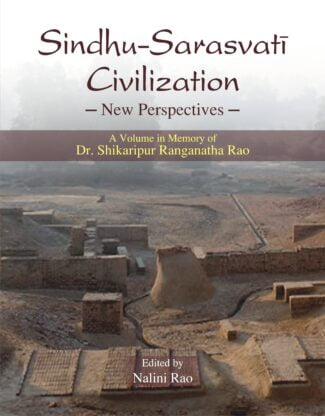
In this book eminent archaeologists, philologists, anthropologists and historians re-examine recent research and existing theories upon the nature of the interrelation between the two most ancient prehistoric cultures of the South Asian subcontinent: the Indus (Sindhu) or Harappan Civilization and the Vedic Civilization.
SindhuSarasvati Civilization: New Perspectives. A Volume in Memory of Dr Shikaripur Ranganatha Rao is a compilation of the papers presented at the International Conference on the SindhuSarasvati Civilization: A Reappraisal held in Loyola Marymount University, Los Angeles, during 21-22 February 2009. Here, eminent archaeologists, philologists, anthropologists and historians re-examine recent researches and existing theories upon the nature of the interrelation between the two most ancient prehistoric cultures of the South Asian subcontinent: the Indus (Sindhu or Harappan Civilization) and the Vedic Civilization. The scholars touch upon areas of consensus and contentions, with a tentatively conclusive interdisciplinary understanding about the pluralistic culture and shared identity of the two riverine cultures between 3000 and 1500 bce.
They rightly swing the balance of the argument away from the archaic and now exploded Aryan Invasion Theory to the well-grounded Vedic Sarasvati milieu as the home of the Harappan Civilization. Thus it opens a new window to the cultural content of the prehistoric period of the subcontinent.
The eminent personalities that have contributed include Ashok Aklujkar, Shiva G. Bajpai, Giacomo Benedetti, R.S. Bisht, Edwin Bryant, Michel Danino, Subhash Kak, Robin Bradley Kar, Nicholas Kazanas, Mark Jonathan Kenoyer, Prem Kishore Saint, Jim J. Shaffer, Diane A. Lichtenstein, Shrikant Talageri, Lavanya Vamsani as well as Sundara Adiga, S.R. Rao, and Nalini Rao.
This volume is poised to evoke keen interest among archaeologists, researchers, historians and students of history and archaeology.

The book conveys the basic principles and allied information on sitar and its music, and vividly deals with gharana, especially its contribution to the existing and traditional Indian classical music, conveying the instrumental aspect of Indian music in relation to sitar playing along with other main musical aspects such as ragas, tals and Senia gharana.
Sitar and Its Music is a revised and enlarged edition of a much sought-after reference book on instrumental music, appeared as Sitar and Its Techniques, in 1981. It is a serious attempt to convey the basic principles and allied information on sitar and its music, keeping in mind its absolute usefulness for the students who want to learn sitar and our great tradition.
The book vividly deals with gharana, especially its contribution to the existing and traditional Indian classical music. It conveys the instrumental aspect of Indian music in relation to sitar playing, largely benefitting the students of music, especially that of sitar. It also brilliantly covers other main aspects of music such as ragas, tals and gharana. The book is a blend of theory and practice, and an attraction to those who are about to step into the magnificent world of sitar. Its text is easy to read, language is simple, and explanation is elegant.
This book will be a great asset for every student of Indian music and those who plan to learn and know about sitar and classical music, explaining its theoretical and practical aspects.
| There are no products |